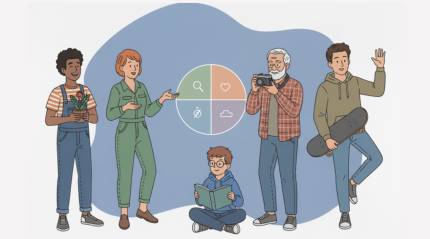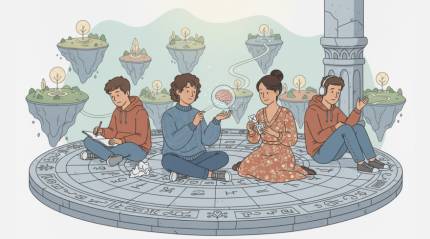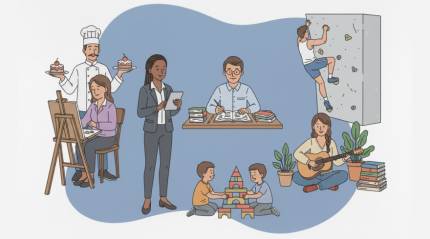A Guide to the MBTI 16-Type Test: Insights, Benefits, and Practical Uses
- 11 November 2025

16 Personalities Test Online: Find Your MBTI Type
Get StartedUnderstanding the MBTI Landscape and Why It Matters
Personality frameworks help people make sense of how they gather information, make decisions, and interact with the world. Among the best-known models is MBTI, a typology that clusters preferences into sixteen distinct patterns. While it is not a measure of skill, intelligence, or mental health, it offers a shared vocabulary for discussing communication styles, motivation, and collaboration. That common language can build empathy in teams, sharpen self-reflection, and reduce friction when stakes are high.
Contemporary interest surged as digital platforms turned a once-niche instrument into a mainstream conversation topic. Many readers first encounter type theory through short overviews or lively articles, and others arrive by comparing different assessments. In that early exploration, people often notice naming conventions and brand language anchored in phrases like Myers-Briggs test 16 personalities, which signals a popular, approachable entry point to the framework.
Beyond the headline claims, this model’s enduring appeal comes from its practical clarity. It translates abstract preferences into everyday behaviors you can observe at work, in relationships, and in learning. For beginners, labels across different websites can blur together, especially when marketing borrows terms such as 16 personalities test Myers-Briggs, yet the core idea remains stable: preferences, not prescriptions, guide how you naturally operate.
- Gain a shared language for collaboration and feedback.
- Understand energy, information, decision, and lifestyle preferences.
- Spot common friction points and build practical coping strategies.
- Use insights ethically without stereotyping or limiting people.
How the Dimensions Work: Preferences and Patterns
MBTI organizes preferences into four pairs: where you focus energy, how you take in information, how you decide, and how you like to live day-to-day. Each axis is a preference, not a rule, and most people can flex both sides. The value lies in recognizing your default mode under stress, when habits surface and autopilot takes over. With that awareness, you can pause, reframe, and choose a response rather than reacting on impulse.
The development history traces to Jungian theory, later adapted into a practical questionnaire for everyday contexts. That questionnaire classifies patterns based on preference clarity, not strength or superiority. In many workplaces, discussions reference an assessment lineage that includes the phrase Myers-Briggs 16 personality test, especially when comparing legacy tools with modern digital experiences that streamline reporting and visualization.
These preferences are best understood as directional arrows rather than boxes with walls. Knowing your typical direction helps you set up environments where you thrive. Organizations sometimes audit their talent systems with language resembling Myers-Briggs 16 personalities test, looking for ways to reduce miscommunication and increase psychological safety while preserving nuance.
- Energy: Extraversion vs. Introversion
- Information: Sensing vs. Intuition
- Decision: Thinking vs. Feeling
- Lifestyle: Judging vs. Perceiving
Benefits and Practical Uses: Career, Teams, and Communication
When used appropriately, type insights can elevate hiring quality, onboarding, performance conversations, and leadership pipelines. They illuminate how teammates prefer to brainstorm, structure a meeting, or escalate a decision. Managers often anchor role design and delegation on strengths while coaching people to stretch intentionally. Couples and friends use the same language to navigate conflict more gracefully and appreciate differences rather than pathologize them.
Budget-conscious learners compare options and formats before committing to deeper programs. In that comparison, some gravitate toward accessible choices such as Myers-Briggs 16 personality test free, using a starter experience to build vocabulary before investing in coaching or certification. That stepping-stone approach works well when you pair it with reflective prompts, journaling, and feedback from colleagues.
The ecosystem includes compact quizzes, robust practitioner-led assessments, and hybrid workshops. For some audiences, entry-level materials sit under broader labels like Myers-Briggs personality test 16 personality, which typically emphasize everyday application over psychometric detail. Regardless of entry point, the goal remains consistent: turn insight into action that improves performance, well-being, and relationships.
| Use Case | Primary Goal | Type-Based Action Tip |
|---|---|---|
| Team Kickoff | Set collaboration norms | Pair complementary preferences and agree on meeting cadences. |
| Career Planning | Align role with strengths | Map energizing tasks to core preferences and schedule recovery time. |
| Conflict Resolution | Reduce friction | Translate needs into preference language and revisit shared goals. |
| Leadership Development | Expand range | Practice stretching to the opposite side in low-stakes settings. |
- Use a shared glossary to keep feedback neutral and behavior-focused.
- Set ground rules that honor both reflection time and rapid iteration.
- Celebrate diverse problem-solving approaches in retrospectives.
Taking and Interpreting the Assessment: Preparation and Next Steps
Preparation is simple: answer honestly about natural preferences rather than job demands or social expectations. A calm setting helps you access how you act on your best days, not just under pressure. After you receive a preliminary result, explore the narrative description, then test it against your lived experiences and solicit examples from colleagues who know you well.
Many learners begin with entry-tier tools and later expand into richer reports or coaching. In that pathway, people frequently evaluate options labeled as Myers-Briggs 16 personalities test free, then supplement the snapshot with structured reflection and conversation to avoid oversimplification. That mix balances convenience with depth, especially for teams running their first workshop.
Short-form questionnaires can be helpful as conversation starters when used with caution. Some websites present a playful on-ramp under names that include Myers-Briggs 16 personalities quiz, which can spark curiosity before formal learning. To move beyond novelty, translate each insight into a small experiment you can try this week at work or at home.
- Write three situations where your preferences helped or hindered results.
- Ask a trusted peer to describe your style in high-stress moments.
- Choose one stretch behavior to practice for the next seven days.
Limitations, Responsible Use, and Expert Tips
No single framework can capture the full complexity of a person. Responsible practitioners treat type as a lens, not a label, and keep outcomes grounded in context. The strongest programs combine education with coaching, feedback loops, and skill-building. When you approach it this way, the tool becomes a catalyst for growth rather than a box you must fit into.
It is also important to separate entertainment from evidence. Some content markets the model as destiny, which can fuel stereotype thinking and confirmation bias. Communities that anchor their language in phrases like MBTI 16 personalities Myers-Briggs often remind participants to focus on behaviors and choices, not fixed traits, especially during hiring and promotion discussions.
Depth comes from translating insight into everyday habits and measurable experiments. Leaders can revisit norms quarterly and assess impact on turnover, engagement, and cycle time. When organizations document development paths, they sometimes reference frameworks under terms like Myers-Briggs personality test 16 personality types, while pairing them with coaching, mentoring, and role clarity to ensure real-world traction.
- Avoid using type to justify poor behavior or exclude candidates.
- Reassess preferences after major life changes or new roles.
- Blend with complementary tools like strengths and values inventories.
FAQ: Common Questions About the MBTI 16-type Approach
Is this a measure of ability or mental health?
No, it is not an ability test and it does not diagnose any condition. It describes preferences, how you typically like to gather information, decide, and organize life. Results are most useful when combined with reflection, feedback, and practical experiments that you can evaluate over time.
How accurate are quick quizzes compared to practitioner-led assessments?
Short quizzes offer an accessible starting point and can feel accurate when your preferences are distinct, but they are still approximations. A professionally facilitated process provides clarifying questions, deeper narratives, and a chance to verify best-fit type through discussion rather than relying solely on a single report that may oversimplify nuance.
Can I find a no-cost option to explore the basics?
Many people start with a brief digital experience, then decide whether to invest in more comprehensive learning afterward. For those exploring budget paths, comparisons often include phrases such as Myers-Briggs 16 personality types test free, and the best practice is to pair any initial result with a thoughtful review and follow-up coaching if possible.
What should teams do after they get their results?
Teams should establish shared norms for meetings, decisions, and conflict resolution, then revisit those agreements after a month to see what worked. You can turn insights into action by designing agendas that alternate reflection and discussion time, pairing complementary preferences, and celebrating wins that arise from diverse approaches to problem-solving.
Is the terminology the same on every website I visit?
Different sites use overlapping labels and sometimes interchangeable phrases for marketing or readability. As you compare sources that mention terms like myer briggs test 16 personalities, keep your attention on the underlying concepts and how clearly the resource helps you translate insight into practical behaviors you can actually test.



